The ocean has long provided humans with a bounty of food. However, a new type of untapped resource is now lapping at our feet: tidal energy.
Our seas contain an abundance of energy in the form of moving water.
Using tidal energy is not exactly a new idea. Humans have used the power of the tide for centuries. But with the aid of modern technology, we can harness the unlimited power of tidal streams.
Join us as we explore how tidal energy can produce electrical energy that’s clean and renewable!
Define Tidal Energy
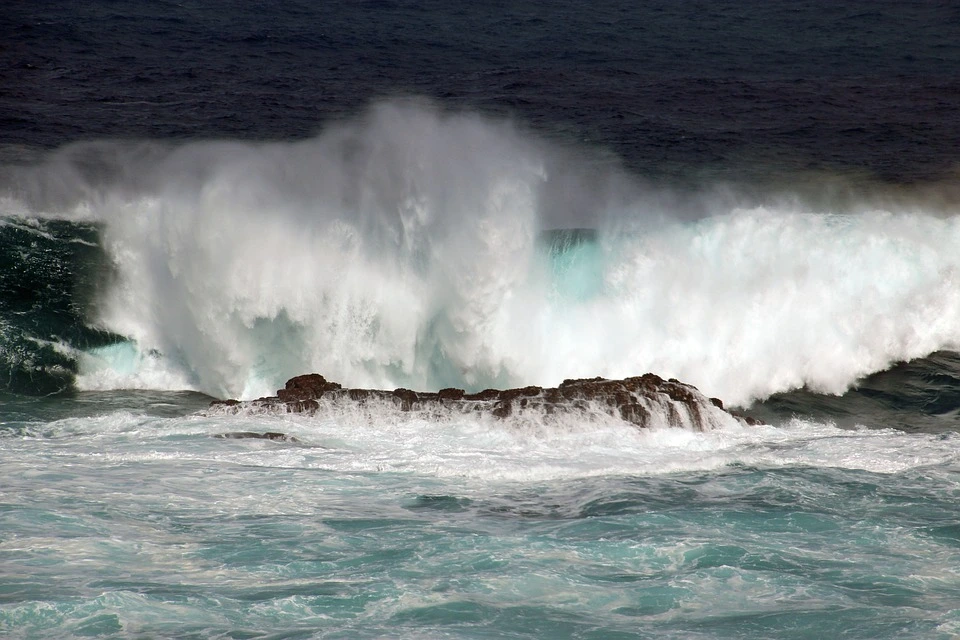
Tidal energy is the power produced by the rise and fall of tidal ocean waters. Tidal generators convert tidal energy into electricity. This makes it a source of renewable, carbon-free energy.
Tidal Energy Advantages & Disadvantages
As with all alternative energy options, there are pros and cons to harnessing tidal energy.
While the majority report is in favor of converting tidal energy into electricity, we think it’s important to look at both sides.
Let’s take a closer look at the pros and cons of tidal energy. We’ll also discuss the basics of how tidal energy works and what the future looks like for this alternative energy source.
The Pros and Cons of Tidal Energy
| Pros of Tidal Energy | Cons of Tidal Energy |
|---|---|
| Clean and Renewable | Environmental Impact |
| Predictable and Reliable | High Construction Costs |
| Long-lasting Equipment | Scarcity of Suitable Locations |
| Effective at Low Speeds | Inconsistent |
As with any type of innovative technology, the advantages and disadvantages of tidal energy are hotly debated.
Before committing to one path forward in the renewable energy sector, it’s important to consider all potential pitfalls and look at the solutions holistically.
How does Tidal Energy Work?

In short, tidal energy is within the gravitational and kinetic energy of our planet’s large bodies of water. The pull of the moon, sun, and the rotation of the earth create the ebb and flow of water.
Every day, these astronomical forces move the tides and where water is moving, there is kinetic energy that people can harness.
A turbine that converts kinetic energy into electrical energy can harness the energy that all this moving water creates. This process is similar to hydroelectric energy, except it doesn’t require falling water.
Tidal energy is different from many other future energy sources in that tidal streams are very predictable.
The cons of wind energy and solar energy pros and cons are that the weather can severely affect their efficiency.
However, the tides are constant and operate on a well-established schedule around the world, which is an invaluable asset for any would-be energy producers.
Define Kinetic Energy and Gravitational Energy
Tidal energy relies on converting energy into electricity. There are 2 main types of energy we’ll be talking about in relation to tidal energy.
1. Kinetic energy: The energy an object or mass (like a body of water) has due to its motion. For example, dropping a ball from the top of a building would create kinetic energy.
2. Gravitational energy: The potential energy created between one smaller object and one larger object due to gravity. For example, there is a lot of potential gravitational energy before you drop a ball from the top of a building because gravity will pull it to the ground.
Tidal energy technologies use these two types of energy to produce electricity. We’ll cover the basics of both types of energy generation.
How is Tidal Energy Produced?
Before you can harness tidal energy, you must first convert kinetic energy into electrical energy.
The best way to accomplish this is with a turbine which spins from the physical push of the tidal stream and converts the water’s movement into usable electricity.
There are currently three different types of tidal turbine systems:
- Tidal Barrage: Tidal barrages are the most efficient way of harnessing tidal energy. They require the construction of a dam-like structure that forces water at high speeds through a bottleneck that contains turbines. The higher speeds of water mean more kinetic energy, which in turn means more power. In many ways, this is like a hydroelectric dam system.
- Tidal Turbines: This system functions similarly to that of a wind turbine. People place a simple turbine in the water. There, the water passing over it drives the rotors. This type is probably the simplest of all the systems and has a cheaper installation cost, although it does produce less energy than others.
- Tidal Fences: Tidal fences are similar in design to tidal turbines but with one major difference: a different rotor. These systems use a turnstile-like design that spins in the direction of the water. People have proposed several variations of this design but the most popular is a spinning cylinder shape that stands vertically.
New Tidal Energy Tech: Floating Tidal Turbines
This type of design is currently being tested and isn’t officially in commercial use. The system utilizes a floating barge that has turbines on its underside.
The turbines can spin in the current that flows near the surface of the water.
This design eliminates the need for any type of construction on the seabed which makes it easier, cheaper, and causes fewer environmental issues than any system currently in use.
It also means that the tidal energy generator is not reliant on high tides to generate electricity.
This promising technology could make tidal energy farms possible in locations all over the world.
Advantages of Tidal Energy
1. Clean and Renewable
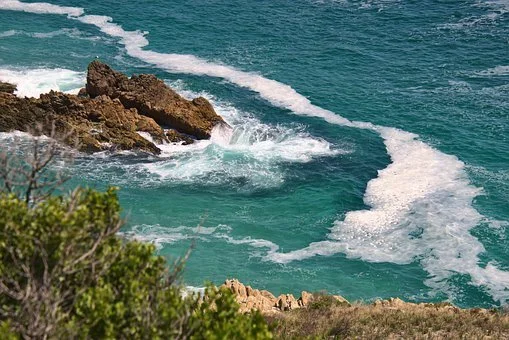
Tidal energy is as clean and renewable as any sustainable resource available to us today.
It creates no pollution once it’s manufactured and installed and doesn’t take up that much physical space when compared to other renewable energy systems.
2. Predictable and Reliable
Most areas experience two high tides and two low tides per day. This cycle is easily predicted and isn’t subject to unexpected changes, unlike many other renewable resources.
Some systems also harvest energy from tidal currents regardless of which direction they are flowing, allowing the production of energy to go on uninterrupted.
3. Long-lasting Equipment
Tidal energy systems are inherently age resistant and have long lifespans. The average estimate for most tidal systems is 75-100 years of working use.
In comparison, a solar panel usually degrades after an average of 20-30 years.
Once tidal energy is harvested on a large scale, the investments will last longer and bring in much more electricity than all over renewable energy sources we’re using today.
4. Effective at Low Speeds
Tidal energy systems can produce energy even when the water passing over or through them is moving relatively slowly.
Water is 1,000 times denser than air, which means it can power a turbine even when moving at a slow pace – like during the slack tide.
One of the cons of wind energy is that if the wind is too strong, the turbine shuts off to avoid damaging the generator inside.
Water density means that tidal energy can work whether the water flow is strong or weak.
Cons of Tidal Energy (Disadvantages)
1. Environmental Impact
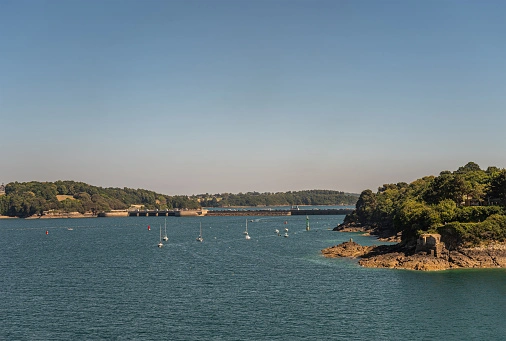
While placing tidal generators underwater may be quite convenient for humans, the same can’t be said for all the creatures of the sea.
Since the systems require turbulent water to power them, a large foundation needs to be built. This type of underwater construction can result in habitat destruction.
The greatest offender is the tidal barrage which utilizes dams that can impede the movement of sea life and potentially wreak havoc on aquatic ecosystems.
There are numerous environmental issues examples that can be tied back to the habitat destruction that occurs as we attempt to harvest our renewable natural resources.
2. High Construction Costs
Building structures strong enough to withstand the turbulent, corrosive nature of seawater is by no means a cheap undertaking. Other alternative energy sources have cheaper upfront costs.
While tidal energy systems have long lifespans and eventually pay themselves off, governments are more concerned with their 5-year budget rather than a 60-year projection.
The initial investment for these systems is often the biggest drawback that’s argued against potential projects.
3. Scarcity of Suitable Locations
Not every seascape near a shore is suitable for a tidal energy facility. They require a very specific set of factors in order to operate effectively and efficiently.
For example, the height of the sea during low and high tide.
The scarcity of available locations for installing tidal energy systems is one of the main reasons why they are not more popular.
4. It can be Inconsistent
Some argue engineering flaws and technical errors like excessive turbine failure rates, failures in generating electricity during low water conditions, and strong currents prevent turbines from operating properly.
So while the tides are very reliable, the technology often is not. When something goes wrong it’s much harder to fix it underwater than it is to fix it on land.
Tidal Energy Farms
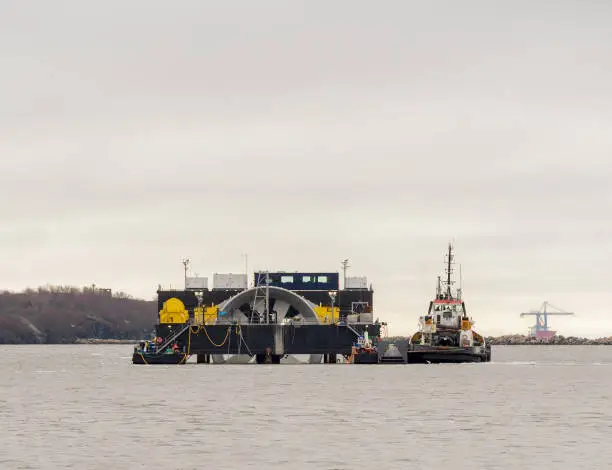
While tidal energy is still a long way from becoming as mainstream as solar power, there are still several tidal energy farms spread around the world that are pushing the boundaries of this innovative resource.
Let’s take a closer look at 3 of the most well-known tidal energy projects.
MeyGen Tidal Stream Project (Scotland)
For the best example of what a successful, full-scale tidal energy farm looks like, there is no better candidate than the MeyGen project in Scotland.
This facility is one of the newest and most promising tidal energy farms out there, and it has done wonders to highlight how powerful the seas can be.
Construction of the MeyGen Tidal Stream Project began in 2015 but it didn’t start exporting energy to the grid until 2017.
Over the past 5 years, this tidal energy farm has produced 252 MW of clean, renewable energy.
The tidal energy farm uses massive 49 feet tall tidal turbines with 52 feet long blades that spin as the tide pass through them. The farm has been very successful because of the powerful tides in the area.
In fact, this project produces 75% of the global tidal electricity generation capacity. The project is a shining success for tidal energy and it will inspire more projects to follow suit.
Rance Tidal Power Station (France)
The Rance Tidal Power Station is located in Brittany, France. Established in 1966, this is the oldest and largest tidal power station on the earth.
It uses a tidal barrage system to produce energy, harnessing 600 GWh annually at a capacity factor of 40%. This power station has enough energy output to satisfy 0.12% of the energy demand in France.
As the oldest tidal energy farm, we can learn a lot from the Rance Tidal Power Station regarding tidal energy efficiency and its real costs.
To date, this tidal energy farm has recovered its initial development costs and now produces energy at a cheaper rate per kWh than that of a typical nuclear energy plant.
The establishment of this tidal power station has been criticized for its environmental impact as the initial construction caused considerable harm to the estuary the barrage system calls home.
Estuaries are notorious for their sensitive biomes, and any fluctuations in salinity and sedimentation caused by interruptions in water flow can be detrimental to the fauna and flora.
Sihwa Lake Tidal Power Station (South Korea)
Sihwa Lake Tidal Power Station is big. In fact, it’s the largest tidal energy farm on the earth and is so gigantic that people can even see it from space.
With a tidal barrage spanning over 12.7 kilometers, the builders did not even intend the massive structure to be a tidal energy farm at the time of its construction.
- The project was originally intended for the reclamation of land and to provide desalinated water for agriculture.
- As soon as the dam was complete the water within it became polluted, stagnant, and unfit for use.
- The government had to find a use for the tidal lake while also helping the ecosystem within it to recover.
They changed it into a power plant. The massive amounts of water passing through the tidal barrage’s sluice gates are used to spin turbines that generate electricity.
The tidal power station became operational in 2011 and currently produces 550 GWh annually, with a power output capacity of 254 MW.
This massive project has facilitated the study of the environmental impact of tidal energy farms.
It has also highlighted the potential for existing tidal management systems to be converted into power-producing systems.
Why Isn’t There More Tidal Energy Availability?
As previously discussed, there are many disadvantages of tidal energy that production companies still need to tackle.
- Construction Difficulties: A turbulent sea is a difficult place to perform any sort of construction and finding companies with the expertise to build and install these structures is no easy task.
- Environmental Factors: The specific environmental requirements for tidal energy farms make them inaccessible for most seaside towns. On the bright side, as technology advances and these energy farms become more efficient, they’ll be more accessible.
The Future of Tidal Energy
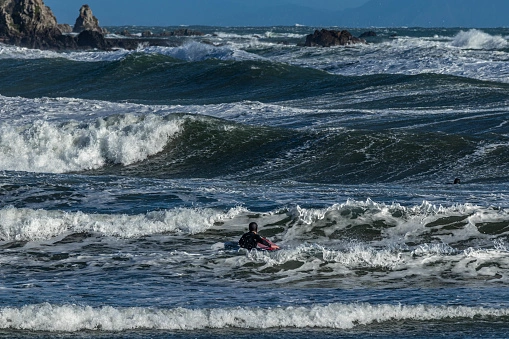
The industry is still in its infancy, but with more investment and expertise, it will become cheaper and more accessible to implement around the world.
With each tidal energy farm that is put into operation, we learn more about the difficulties and how to overcome them.
Market Growth
As interest in tidal energy output grows around the world, people are doing further research and development. You can see a simple indicator of the growth in this industry in its market value.
Experts valued the tidal energy market at $487 million in 2014 but experts expect it to be worth $11.3 billion by 2024.
Tidal Energy Development in the USA
To date, there are no large-scale tidal farms in the United States, mainly because it’s hard to find a suitable location. There are 2 sites under consideration by the US Energy Information Administration.
- Cook Inlet, Alaska
- Maine coastline in several places
However, because the United states has thousands of miles of coastline, smaller-scale projects could be realized along the East Coast, West Coast, and Gulf of Mexico.
Disadvantages of Tidal Power Along Coastlines
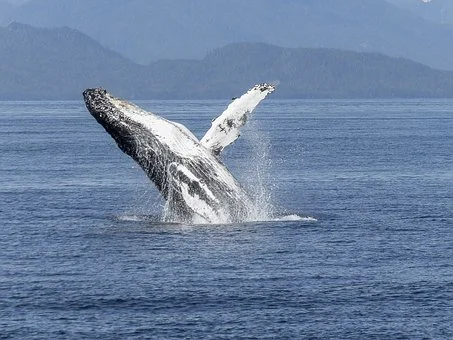
The main disadvantage of tidal power, in our minds, is the impact that these installations, even floating platforms, have on the marine ecosystem.
It’s no secret that tidal barrages drastically and permanently change the seafloor and habitats. Even smaller installations have a big impact on underwater life.
- Underwater turbines change the strength and direction of tidal currents – disrupting the flow of water that fish and marine mammals rely on to guide them during migrations.
- The construction of underwater structures changes the dwelling and migration patterns of baitfish and sea-floor creatures like clams, mussels, crabs, and starfish.
- Larger fish and sea mammals that come to hunt these new “habitats” can be harmed by underwater turbines, or tangled in moorings or cords that come loose.
- Dolphins and whales (among other sea creatures) rely on sound for navigation and communication. Underwater installations of all kinds disrupt this communication and are known to cause confusion and misdirection.
So while we are all for green energy production, and we do think that tidal power has a future in our renewable energy portfolio, we’d love to see more research done in this area.
We’d also love to see required environmental impact reporting and regulations that ensure that installations are as safe as possible for those who live in the marine environment.
Final Thoughts
Tidal energy holds a lot of promise for the planet. Our global considerations should include tidal energy in the portfolio of green energy.
However, we don’t like to see alternative energy solutions that put wildlife at risk, so we’d love to see designs that can ensure that harm doesn’t come to oceanic wildlife.
What are your thoughts on tidal energy? Do you think it’s a good idea for the future? Let us know in the comments below!
